 |
||
|
||
| ||
New models of the marketThis month was quite fruitful for different technical developments, and it is not surprising taking into consideration the consumer electronics display (CeBIT) which was hold in Hannover in the end of March. Today we will speak about models which were not introduced in the article. The NTT DoCoMo mobile communication review contains some information on the CeBIT as well. Panasonic has introduced the first mobile phone in the world which is compatible with SD Memory Cards. In Japan the first models KX-HS100 and KX-HF300 will appear very soon. The SD Memory Card, installed in a mobile phone, will allow recording up to 4 hours of voice messages, storing 4000 electronic messages, recording graphics images etc. In the nearest time the company plans to apply this technology in other portable devices. It means that right after the first communication device with an external memory we will see many other similar devices. Flash cards become more and more popular now, and prices for them are also dropping down. 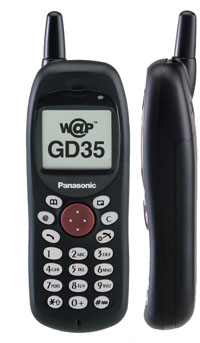 As for traditional products, Panasonic has introduced two new models: GD35 and GD95 . The first model is to be positioned on the budget market, but in possibilities it outscores such phone as Siemens A35 at the same price. A large display and a vibracall are the main advantages of the phone. However, in September, when the model is due to appear on the market, the situation may change. The Panasonic GD95 phone is a flagship of the Panasonic mobile phones. It features all functions of the 90 series, including several colors of backlight, a speakerphone function, a normal post client and a possibility of recording any sound to set a ring. For the first time the phone supports GPRS technology. A user interface was remade: now a user can navigate with a joystick which can be inclined (4 directions) and pressed. The first menu is implemented in the form of a carrousel, like in some Philips phones (for example, Xenium 989 ) or Sony (for example, Sony CMD-Z5 ). WAP-browser is 1.2 version. 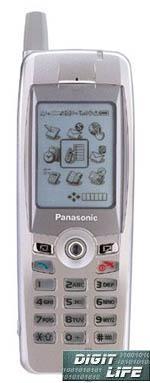 Due to a large number of small and light phones power supply becomes an issue of utmost importance. Power Paper Ltd. have developed ultra-thin (0.5 mm) inexpensive flexible power sources. The technology consists in covering A zinc and manganese dioxide (MnO2) based cathode and anode are printed, pasted, or laminated onto paper, plastic and other media. It gives not only flexible properties but also allows to produce batteries of any form and size which require no casing to hold battery chemicals. A printed cell of Power Paper power source, a squared inch in diameter (25 X 25 mm), gives 1.5 V and more than 15 mA/hour, a shelf life of the battery is 2 years. The components are not toxic and harmless for your health. Since the new technology doesn't need any special equipment, the prime price of such sources can come to 1 cent per inch squared. Scientists from Shanghai have developed solar batteries of a new generation for mobile phones. They announced that their accus can use any light energy and work twice longer than usual Li accumulators. 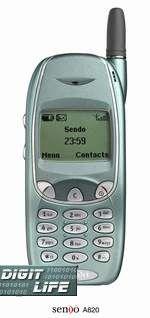 Now let's come back to Cebit. Sendo has introduced a new model Sendo A820. The model is based on the same platform as the 800, but additionally it is equipped with voice dialing, voice marks for the menu access, a dictaphone, receipt and sending of images with SMS-messages, plus V-card and V-calendar support. Alcatel has shown off a new model - 511. It is a simple device with a beautiful design and a usual set of functions; by the end of the year they are going to release this version with GPRS support. 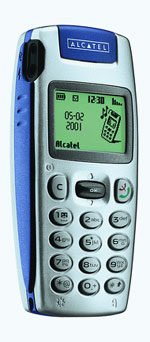 Siemens has introduced a portable MP3-player for mobile phones M35i, C35i, S35i and for future Siemens models. Plug-in multimedia cards are used as data carriers. Audio files are recorded via USB-interface. Loading of 30 min of music takes only 5 minutes. A new MP3-console for a phone can be used as a portable hands-free garniture. One hour of playback reduces a standby time by 10%. The model weighs only 20 g. Besides, they have demonstrated A40 model with a vibracall which is positioned as a more advanced model than A35 or A36 .  This summer Siemens will release phones of new colors (in particular, silvery): S35 and C35 . 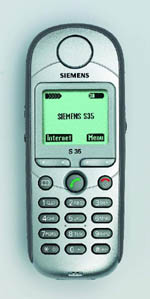 This series will be produced up to the end of this year, while production of the A36 model will be stopped within the nearest months. Interestingly that initially Siemens positioned A36 and A35 models in the budget market and they were lacking for a vibracall not to compete against the C35 model, but at the instance of a french cellular operator which had bought a large lot of A36 phones, they integrated vibracalls in this model. There were also some concept-models, in particular the Wristphone. Voice dialing, hands free mode, thriband GSM standard are combined in a phone a little bit larger than a usual watch. This engineering sample with a built-in antenna weighs 36 g and measures 28 cubic cm. The device is powered by a 550 mAh battery and uses a usual SIM-card.  Ericsson has announced the GM32 - a small communication module for M2M-applications (machine-machine or machine-person connection). The GM32 supports GSM 900 and 1800, and a full set of additional functions: CSD, GPRS, GPS and even Bluetooth. According to Ericsson, the device is compact, easy to install and requires no mending. The new module will appear on the market in April. M2M will allow to park a car with a smartphone in the nearest future. Today the M2M is used only in concept-cars and other expensive devices. 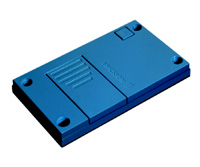 The Korean Radio Research Laboratory (RRL) has developed a new antenna which reduces a radio absorption coefficient by a human being by 30% and improves receipt quality by 25%. The solution is simple and complex at the same time - two built-in antennae instead of one. In my opinion, it is better than two antennae which radiate in all directions except towards the head (one of them was developed in the USA): they often lose connection. Scientists from the Hong Kong Scientific and Technical University under the leadership of Ge Weikun have invented very easy and cheap material which allows reducing by 90% a level of microwave radiation of mobile phones. The material absorbs radiation unlike other shields which reflect it. Although many words have been said about harmlessness of cellular phones, many scientists doubt in it. New material is only 0.5 mm width and costs $2.5 per 10 X 10 cm sheet. However, Motorola states that creation of such material is impossible. If such phone really absorbs harmful radiation, then the connection would break very often, or batteries would be used up very quickly. Anyway, Motorola consider that phones are harmless enough even without special shielding. Meanwhile, Spectronics, a Swedish company, has developed and patented a unique system for mobile phones - SideTouch. A prototype of a Sidetouch phone, called Spectronics Multimedia Telephone, was displayed at CeBit'2001. The phone can send e-mail with attached files via the current networks. The other functions of the smartphone are a fax, a built-in digital camera, WWW and WAP browsers, e-mail, load speaker and a microphone. But the key feature is a sensor screen and an operating system developed for thumb touches. This device can be also used as a dictaphone. 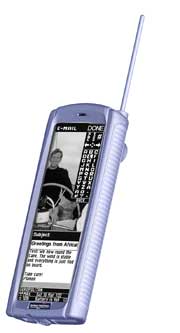 GARMIN company who specializes in GPS solutions, introduced NavTalk II in March - a usual GSM device but with a large screen and GPS features. The phone supports WAP, has a built-in modem and a GPS-navigator which shows your position on an e-map. You can download more detailed maps for your phone from the company's site. The NavTalk II is more compact and convenient than its elder brother NavTalk Pilot . 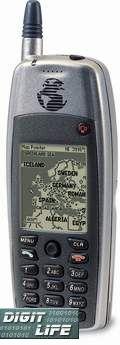 Nec has shown off only two new models: the clamshell NEC DB7000 and GPRS-phone NEC DB4300. The first model (an elite one) has some unique possibilities: a color display and a large size of memory for 1000 names with several phones and up to 700 notes. Any abonent can be given an image which will appear in case he or she calls. A very convenient function similar to the one used in the Sanyo SCP5000 . It is interesting that these devices are similar both in functions and in appearance. 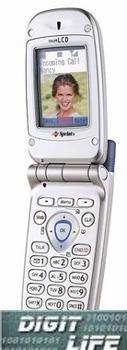 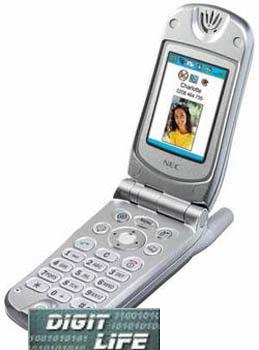 The DB4300 model is typical to the company. Apart from GPRS (4+1) support the NEC phones for the first time use SMS concatenation. All other functions are standard, as well as a powerful Li-Ion rechargeable battery of 900 mAh capacity. 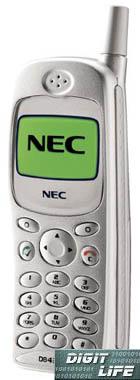 Telespree has introduced a prototype of an expendable mobile phone. The model has a simpler handling as compared with other phones. The phone lacks for a display and keys, it can't receive incoming calls. A user dictates a phone number, and the phone dials it after recognition of figures. You can also find out how long the phone will work. The model's dimensions are similar to other phones. Disposable phones will be sold in markets, drugstores, slot-machines. In fact, after its "death" you can change a removable unit with batteries and a time meter. 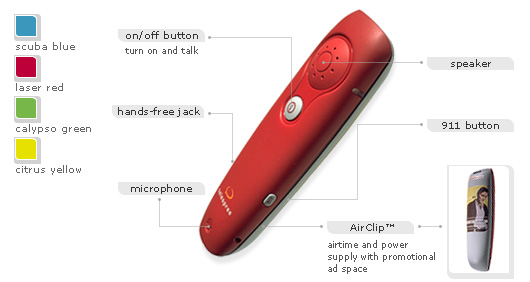 In this connection the following information is interesting. During the last 5 years the number of street coin-telephones in the USA has reduced from 2.5 to 2.1 million pcs, and many operators are going to get rid of them in the nearest future. BellSouth, for example, is going to disable all their 143,000 coin-telephones by the end of 2002. However, the Federal Communication Comission of the USA has established new rules of income distribution from usage of coin-telephones. The new rules will provide up to $300,000 annually to telephone companies. Now, an operator-owner will receive 24 cents for each call from an operator which processes this call. If a call is processed by several operators, the first one has to pay. Earlier, operators could refuse paying to a telephone's owner, having sent it to another operator who also processed that call. This was resulting in 20-50% losses in incomes. 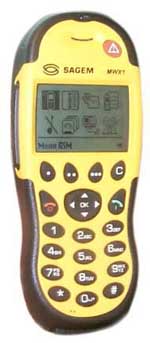 Sagem, a french company, showed off a new model of a phone for professionals. The Sagem MV-X1 is analog to Nokia 6250 in its dustproof, waterproof and and shock resistance features, plus it has a built-in thermometer and barometer which are indispensable in some cases. In all other respects it is a usual GSM-therminal. The Option has introduced GlobeTrotter - Type II PC card which provides access to the majority of current GSM/GPRS networks: EGSM900, DCS1800 and PCS1900. GlobeTrotter is a device of class B: you can receive GSM calls, download information on GPRS. The card allows to control a signal level, receipt quality and an actual bandwidth. The GlobeTrotter is supplied together with headphones, an external antenna, and an additional battery (if the card is used with a PDA). Unfortunately, information on the price is absent.  Sharper Image Design has developed an interesting product - an automobile system for a mobile phone with a digital dictaphone (it is called Hear it Again). It records a talk or voice mail into flash-memory in 20 sec fragments (4 fragments in total). Apart from 4 digital record buttons there is also a 30 sec dictaphone on a magnetic type. There is, of course, a loudspeaker and a recharging unit. Unfortunately, this system is supported only by Nokia 51xx, 61XX and Motorola StarTac models. At the display a new highly-integrated chipset Conexant for GSM 900/1800/1900 was shown off. It has twice less chips as compared with competitors. The chipset consists of only 4 chips: a frequency processor, a triband amplifier, a power control chip and a direct transformation transceiver, which, in its turn, includes an amplifier with a low noise factor, a quadrature demodulator, frequency filters and generators. The company says that with the Conexant chipset it will be possible to make handsets twice less in size. Silicon Laboratories has developed a new transceiver based on the CMOS technology (0.18 and 0.25 from TSMC). With this "chipset" (a transceiver, an interface chip and a high-frequency generator) only an amplifier will be based on BiCMOS or GaAs technology. Although Philips was first to introduce such solution, Silicon Labs model doesn't require special processors in base stations. And what can the CMOS give the handsets? Cheap production, undoubtedly. Such components have been already developed for third generation networks. In March LSI Logic announced a single-chip wide-band processor for a new standard CDMA2000-A 1xRTT of the third generation cellular networks. The LSI CBP4.0 is designed to transfer voice and data and can be used in cellular phones and modems. The CBP4.0 chip is a multitask processor for CDMA2000-A, PCS and AMPS cellular networks which is back compatible with IS-95B. Capable to process digital and analog signals, the processor is based on 0.18 micron CMOS technology and allows a data rate up to 153.6 Kbps. The processor will appear on the shelves in the next quarter. Infineon has introduced a new technology of packing discrete components which are used in communication equipment. This technology suits elements working both in radio and audio ranges. The first package is called TSLP (Thin Small Lead-less Package). TSLP is an ultra-miniature plastic package (1 X 0.6 X 0.4 mm) which is only 20% from a standard SC-75 package. The TSLP is completely compatible with the current technologies of placing discrete elements on a printed circuit board. By the way, the TSLP uses environmentally friendly materials and costs less. Usage of this technology will allows to save space on a board in such devices as mobile phones, PDA, digital players and cameras. Discrete components and small integral circuits in TSLP-implementation will start shipping by the end of April. Toshiba Corp. reported on production of TFT-LCD panels made of low-temperature polysilicon for mobile phones. The mass shipment will start in June of 2001. Toshiba has reduced twice the power consumed with the new control system - 1 bit of SRAM per one pixel of an image. The total consumption of a 2-inch (5 cm in diagonal) panel will constitute 25 mW in the mode of 4096 colors and less than 2 mW in the mode of a static 8-color image. In March Transmeta Corp. reported that they intended to supply efficient and compact chips for a Japanese market of mobile phones and PDA in the second half of the year. According to the Morgan Stanley marketing company, a Japanese mobile market is one of the most dynamic: in 1999 there were 7 million pcs, whereas in 2005 their number will reach estimated 65 million pcs. AMD together with Wavecom announce a forthcoming
development of GSM/GPRS platform for ... PC. It sounds this way:
"Allow PC manufacturers to offer platforms based on the Athlon with
integrated GSM/GPRS functions". It is strange since any modem (analog,
cable, xDSL) will be much more advantageous than GSM/GPRS.
Write a comment below. No registration needed!
|
Platform · Video · Multimedia · Mobile · Other || About us & Privacy policy · Twitter · Facebook Copyright © Byrds Research & Publishing, Ltd., 1997–2011. All rights reserved. |